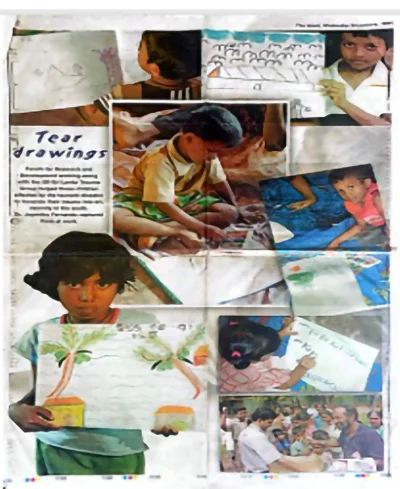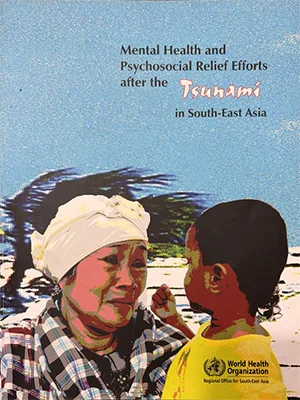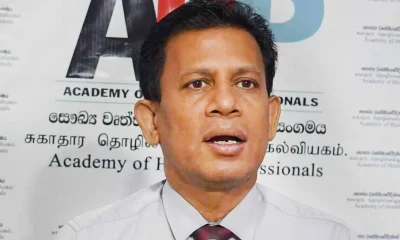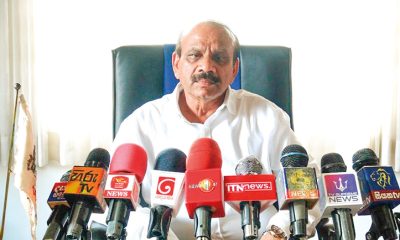Features
GROWING COCONUTS ON ‘COCONUT LANDS’

by Chandra Arulpragasam
In 1958 I went to a lecture on coconut cultivation, because I knew nothing of the subject. The lecturer, a well-known coconut planter, started his talk with the platitude: ‘The duty of a coconut planter is to plant coconut, on coconut land’. But this set me thinking. First, who gave him the duty to plant coconuts? From his own point of view, he should be planting the crop that would give him the greatest returns, while from the country’s point of view he should be planting the crops that would provide the greatest return in terms of income, foreign exchange, employment and sustainability. Secondly, who decided that these were ‘coconut lands’? Was this not a terminology (‘tea lands’, rubber lands’, ‘coconut lands’) inherited from the British, who grew these crops because they could be grown on a plantation-scale for export?
A couple of years later (in 1960) when I headed the agriculture sector in the Department of National Planning, and again when I came with the ILO World Employment Mission to Sri Lanka in 1974, I had an opportunity to revisit these questions. If coconut was to be a mono-crop, it was important that it should meet the above criteria of greater employment, greater income and greater foreign exchange earnings compared to other crops. Coconut brings much lower financial returns than tea or rubber. As for employment, figures of 1960 showed that while one acre of tea employed 1.1 persons per acre per year, and one acre of rubber employed 0.4 persons per acre, one acre of coconut employed only 0.1 persons per acre per year. That is, only one worker was employed for every 10 acres of coconut, which was four times less than that employed in rubber and 10 times less than that employed in tea. This meant that the so called ‘coconut lands’ were under-utilizing the land not only in terms of income but also in terms of employment.
In physical terms, assuming that the coconut trees are planted in the usual spacing of 8m x 8m apart (which is accepted by the CRI as standard) and that their root system spreads only two metres around each tree (CRI stsndard), this would still leave 78 per cent of the land untouched and unutilized – the best lands in the ‘coconut triangle’.
This brings us back to the previous question. Why should these lands be called ‘coconut lands’? Is coconut the best or only crop that can be grown on them? Undoubtedly these lands are well suited for coconut, while coconuts are much in demand by our people. Not for nothing has the coconut tree been called ‘the tree of life’. But is it wise to relegate so much of our fertile lands to a relatively low-paying mono-crop? The British probably originated the nomenclature of ‘coconut lands’ when they grew coconut as a monocrop on a plantation scale, thus making it a land-extensive and labour-extensive crop, as opposed to the land-intensive and labour-intensive crops dictated by our factor endowments. Hence, this article is not against the planting of coconut: it is only against the planting of coconut as a monocrop on lands capable of yielding much more by way of intercropping.
The system of management of ‘coconut lands’ in the period 1960-1980 speaks for itself. Whereas tea and rubber estates were managed by resident estate superintendents or managers, coconut estates were ‘looked after’ by a ‘conductor’ or by a ‘watcher’, armed only with a torch and gun. The latter showed that the focus was on preventing the theft of coconuts, rather than on increasing yields or output. This locked large extents of these ‘coconut lands’ in a cycle of low expectations, low investment, low-level management, low income and low employment.
The Coconut Research Institute (CRI) in 1974 insisted that the optimum stand of coconut was 64 trees per acre, with an adequate distance (8 metres) between the individual trees and the coconut rows. It argued, on the one hand, that the growth of the intercrop would be stunted by the shade of the coconut, while insisting on the other, that the intercrop would deprive the coconuts of needed soil nutrients. After long discussions, the CRI experts ultimately agreed to the following propositions made by me in 1974.
First, it would be technically possible to inter-plant other crops during the first five years of replanting/new planting coconut without any adverse effects, since the coconut palms would be too small to block out the sunshine from the intercrop. This in itself was a big breakthrough, since an average of 9,300 acres was replanted or newly planted to coconut each year in Sri Lanka. Since intercropping would be possible for the first five years, the total acreage available for intercropping in the newly planted/replanted acreage in any particular year would be 46,500 acres (9300 acres x 5 years).
From this total should be deducted the 22 per cent of land that is actually occupied by the newly planted coconut, which would leave a net acreage of 36,000 acres for planting other crops. For purposes of comparison, this annually available acreage is more than double the extent of land opened up under land development/colonization schemes in each year, prior to the Mahaweli Scheme.
Secondly, the CRI ultimately agreed that in older stands of coconut (more than 25 years old), the trees would have grown so tall that they would not block out the sun from an inter-planted crop. It further now agrees that intercropping is possible without detriment to the coconut or its yields for 35 years of the trees’ 55 years of productive life. It is a pity that it has taken about 30 years for technical thinking to reach this conclusion!
But, thirdly, it was necessary to push the thinking even further. I argued that wider spacing between the coconut rows would result in less shade between the rows, thus enabling intercropping. The CRI in 1974 initially objected to this on the grounds that it would reduce the total number of trees per acre. But they ultimately agreed to my suggestion that if we increased the space between the rows but planted closer along the rows, the number of 64 trees per acre could still be attained, without any decrease in total production. Such further-apart spacing of coconut rows is now (40 years later) actually practised in Kerala and the Philippines, combined with intercropping. However, in Sri Lanka, although this was technically accepted in 1974, there has been little action along these lines by the Coconut Development Authority.
There remained the question of what could be grown as an inter-crop. When I travelled for FAO in Asia in the 1970s, I found pineapple, bananas, sisal, maize and manioc already inter-planted with coconut in the Philippines, and even cocoa under coconut in Indonesia, while livestock was common in most countries. Thus Sri Lanka lagged behind other South East Asian countries in this regard not only in the 1970s, but even so today.
Despite the government’s neglect, private planters in Sri Lanka have recently been adopting intercropping at an increasing pace. According to a survey done by the Coconut Research Institute in 2006, cashew was the most popular intercrop in the Dry Zone, while pineapple, betel and pepper were most popular in the Intermediate Zone. Tea, cinnamon and ginger were most popular in the Wet Zone, while bananas and livestock were common in all regions. Agro-forestry using tree crops (such as glyricidia) has also been recently recommended as a means of providing fodder for livestock, wood for fuel, biomass for fertilizer, control of erosion and soil moisture retention.
Obviously the possibilities of intercropping would be more limited in drier parts of the country with poorer soils. The inter-planting of cashew trees (pruned low) between the rows of coconut has now been adopted in the drier areas. I had also suggested (in the Short Term Implementation Programme of 1961) that groundwater was likely to be available at fairly shallow levels in the coastal areas north of Puttalam, which could be pumped up for higher value crops. I had also suggested the possibility of using windmills for such irrigation, which could be powered by the steady winds that blow during the dry season in these areas.
In 1994, I was able to revisit this question of inter-cropping under coconut in the drier areas. A women’s micro-credit in the dry north of the Puttalam District had used its loan to purchase a pump to irrigate an inter-crop on land newly planted to coconut. The women found groundwater at a depth of only four feet, which they pumped to irrigate chillie plants cultivated between the newly planted coconut rows. Their net return was Rs. 30,000 per acre within a four month period in 1994, which was more than treble the return from the adjoining coconut land for the whole year. Meanwhile, the fertilizer and water that they used for the intercrop were found to benefit the newly planted coconut too, in a win-win synergy. In the long run, the possibility of drip irrigation for coconut needs also to be considered. Such irrigation is needed only at the height of the dry season (cheap systems are now available) in order to reduce stress and increase yields.
To sum up, the Coconut Research Institute has now agreed to the following propositions that I proposed in 1961 and reiterated in 1974 (ref. ILO World Employment Mission, 1974).
· Inter-cropping between newly planted or replanted coconut can be done without prejudice to the newly planted coconut palms for the first five to six years of their life.
· In new plantings, the coconut rows could be planted farther apart, but with more trees per row, such that the total number of trees per acre will not be reduced. This would enable an inter-cop between the rows.
· Inter-planting among older coconut stands of over 25 years can be undertaken without detriment to the coconut trees or to the intercrop.
· Such intercropping can be done even in the drier regions using intercrops suited to the drier conditions, while irrigation would provide an added bonus.
· The yields of coconut actually increase because of the fertilizer and water used in the intercrop.
· There are other advantages of intercropping, such as providing biomass for fertilizer, increasing soil moisture and reducing erosion.
· The inter-crop (depending on the crop) is capable of yielding more than double the value of all the coconuts that could be produced from the same land.
Despite intercropping being both feasible and profitable, it was reported as late as 2007 that ‘in Sri Lanka, most of the coconut holdings are maintained as monocultures’ (Gunathilake, 2007). The question is why intercropping has not been more widely adopted when its feasibility and desirability were highlighted as early as 1974. The answers, in the opinion of the writer, are mainly structural and institutional.
The advantages of intercropping arise from its more intensive use of land and labour, with resultant higher returns per acre. However, the pattern of absentee ownership and management of larger estates raises the problem of supervising the casual, non-resident labourers needed for intercropping. Faced with this question, one of my estate-owner friends exploded: ‘Are you mad? The fellows (the labourers) will steal my coconuts’! Thus, although intercropping is recognized as feasible and profitable, the prevailing agrarian structure (with large holdings and absentee landlords not prepared to accept outside labour) seems to be the major factor inhibiting the wider adoption of inter-cropping on larger estates. Such estates (over 20 acres) occupied 18 per cent of the total area under coconut in 2002 (Agricultural Census of 2002).
Coconut, however, is mainly a smallholder crop in Sri Lanka, with 80 per cent of all ‘coconut lands’, covering almost 800,000 acres being made up of small holdings; 54 per cent of these are less than three acres in extent. Inter-cropping is gaining ground in this area, using mainly family labour. Although figures of comparative coconut yields between large and small coconut farms are not available for Sri Lanka, it is very likely that the coconut yields are higher in these small holdings compared to larger holdings, as proved in other countries. More importantly, the total value of agricultural production per acre in such small holdings is likely to be much higher than that in the large, well-managed coconut estates.
This is because the coconut smallholder invests more labour per unit of land to intensify and diversify his production by intercropping, in order to maximize his income. Most small coconut holdings are likely to include a papaya, banana or lime tree, some betel or pepper vines, some home-grown vegetables and some livestock. In fact, the small holder actually attains this higher level of total productivity per acre only by treating his land as much more than a ‘coconut land’.
Fortunately in more recent times, individual coconut planters in Sri Lanka have started to inter-crop on their own initiative, with encouraging results. The Coconut Research Institute has also helped by useful research into types of crops and land practices for intercropping. There has also been more forward-looking research and development abroad, in terms of ‘coconut based farming systems’ (CBFS) – a concept which is gaining ground in South India (Kerala) and some other South East Asian countries.
The purpose should not be merely to increase coconut yields, but to maximize the total productivity of these lands on a sustainable basis. This can best be achieved by a more holistic approach which seeks to develop the farming system as a whole, with each component synergistically supporting the other. While coconut would provide the pillars of such a farming system, inter-cropping would enhance its total productivity and ecological sustainability. Since coconut would still be the foundation of such a system, perhaps we could even be forgiven for referring to these lands affectionately as ‘coconut lands’!
(The writer who was a member 0f the old Ceylon Civil Service thereafter had a long career with FAO)
Features
Wishes, Resolutions and Climate Change

Exchanging greetings and resolving to do something positive in the coming year certainly create an uplifting atmosphere. Unfortunately, their effects wear off within the first couple of weeks, and most of the resolutions are forgotten for good. However, this time around, we must be different, because the nation is coming out of the most devastating natural disaster ever faced, the results of which will impact everyone for many years to come. Let us wish that we as a nation will have the courage and wisdom to resolve to do the right things that will make a difference in our lives now and prepare for the future. The truth is that future is going to be challenging for tropical islands like ours.
We must not have any doubts about global warming phenomenon and its impact on local weather patterns. Over its 4.5-billion-year history, the earth has experienced drastic climate changes, but it has settled into a somewhat moderate condition characterised by periods of glaciation and retreat over the last million years. Note that anatomically modern Homo sapiens have been around only for two to three hundred thousand years, and it is reasoned that this stable climate may have helped their civilisation. There have been five glaciation periods over the last five hundred thousand years, and these roughly hundred-thousand-year cycles are explained by the astronomical phenomenon known as the Milankovitch Cycle (the lows marked with stars in Figure 1). At present, the earth is in an inter glacial period and the next glaciation period will be in about eighty thousand years.
 (See Figure 1. Glaciation Cycles)
(See Figure 1. Glaciation Cycles)
During these cycles, the global mean temperature has changed by about 7-8 degrees Centigrade. In contrast to this natural variation, earth has been experiencing a rapid temperature increase over the past hundred years. There is ample scientific evidence from multiple sources that this is caused by the increase in carbon dioxide gas in the atmosphere, which has seen a 50% increase over the historical levels in just hundred years (Figure 2). Carbon dioxide is one of the greenhouse gases which traps heat from the sun and slows the natural cooling process of the earth. This increase of carbon dioxide is due to human activities: fossil fuel burning, industrial processes, deforestation, and agricultural practices. Ironically, those who suffer from the consequences did not contribute to these changes; those who did contribute are trying their best to convince the world that the temperature changes we see are natural, and nothing should be done. We must have no illusions that global warming is a human-caused phenomenon, and it has serious repercussions.

(See Figure 2. Global Temperature and Carbon Dioxide Levels)
Why should we care about global warming? Well, there are many reasons, but let us focus on earth’s water cycle. Middle schoolers know that water evaporates from the oceans, rises into the atmosphere where it cools, condenses, and falls back onto earth as rain or snow. When the oceans warm, the evaporation increases, and the warmer atmosphere can hold more water vapour. Water laden atmosphere results in severe and erratic weather. Ironically, water vapour is also a greenhouse gas, and this has a snowballing effect. The increased ocean temperature also disrupts ocean currents that influence the weather on land. The combined result is extreme and severe weather: violent storms and droughts depending on the geographic location. What is happening on the West coast of the USA is an example. The net result will be major departures from what is considered normal weather over millennia.
International organisations have been talking for 30 years about limiting global temperature increase to 1.5oC above pre-industrial levels by curtailing greenhouse gas emissions. But not much has been done and the temperature has risen by 1.2oC already. The challenge is that even if we can stop greenhouse gas emissions completely, right now, we have the problem of removing already existing 2,500 billion tons of carbon from the atmosphere, for which there are no practical solutions yet. Scientists worry about the consequences of runaway temperature increase and its effect on human life, which are many. It is not a doomsday prediction of life disappearing from earth, but a warning that life will be quite different from what humans are used to. All small tropical nations like ours are burdened with mitigating the consequences; in other words, get ready for more Ditwahs, do not wait for the twelve-day forecast.
Some opined that not enough warning was given regarding Ditwah; the truth is that the tools available for long-term prediction of the path or severity of a weather event (cyclone, typhoon, hurricane, tornado) are not perfect. There are multitude of rapidly changing factors contributing to the behavior of weather events. Meteorologists feed most up to date data to different computer models and try to identify the prediction with the highest probability. The multiple predictions for the same weather event are represented by what is known as spaghetti plots. Figure 3 shows the forecasted paths of a 2019 Atlantic hurricane five days ahead on the right and the actual path it followed on the left. While the long-term prediction of the path of a cyclone remains less accurate, its strength can vary within hours. There are several Indian ocean cyclones tracking sites online accessible to the public.

Figure 3. Forecasting vs Reality
There is no argument that short-term forecasts of this nature are valuable in saving lives and movable assets, but having long term plans in place to mitigate the effects of natural disasters is much more important than that. If a sizable section of the population must start over their lives from ground zero after every storm, how can a country economically develop?
The degree of our unpreparedness came to light during Ditwah disaster. It is not for lack of awareness; judging by the deluge of newspaper articles, blogs, vlogs, and speeches made, there is no shortage of knowledge and technical expertise to meet the challenge. The government has assured the necessary resources, and there is good reason to trust that the funds will be spent properly and not to line the pockets as happened during previous disasters. However, history tells us that despite the right conditions and good intentions, we could miss the opportunity again. Reasons for such skepticisms emerged during the few meetings the President held with the bureaucrats while visiting effected areas. Also, the COPE committee meetings plainly display the inherent inefficiencies and irregularities of our system and the absence of work ethics among all levels of the bureaucracy.
What it tells us is that we as a nation have an attitude problem. There are ample scholarly analyses by local as well as international researchers on this aspect of Sri Lankan psyche, and they label it as either island or colonial mentality. The first refers to the notion of isolated communities perceiving themselves as exceptional or superior to the rest of the world, and that the world is hell-bent on destroying or acquiring what they have. This attitude is exacerbated by the colonial mentality that promoted the divide and conquer rules and applied it to every societal characteristic imaginable; and plundered natural resources. As a result, now we are divided along ethnic, linguistic, religious, political, class, caste, geography, wealth, and many more real and imagined lines. Sadly, politicians, some religious leaders, and other opportunists keep inflaming these sentiments for their benefit when most of the population is willing to move on.
The first wish, therefore, is to get the strength, courage, and wisdom to think rationally, and discard outdated and outmoded belief systems that hinder our progress as a nation. May we get the courage to stop venerating elite who got there by exploiting the masses and the country’s wealth. More importantly, may we get the wisdom to educate the next generation to be free thinkers, give them the power and freedom to reject fabrications, myths, and beliefs that are not based on objective facts.
This necessitates altering our attitude towards many aspects of life. There is no doubt that free thinking does not come easily, it involves the proverbial ‘exterminating the consecrated bull.’ We are rightfully proud about our resplendent past. It is true that hydraulic engineering, art, and architecture flourished during the Anuradhapura period.
However, for one reason or another, we have lost those skills. Nowadays, all irrigation projects are done with foreign aid and assistance. The numerous replicas of the Avukana statue made with the help of modern technology, for example, cannot hold a candle to the real one. The fabled flying machine of Ravana is a figment of marvelous imagination of a skilled poet. Reality is that today we are a nation struggling with both natural and human-caused disasters, and dependent on the generosity of other nations, especially our gracious neighbor. Past glory is of little help in solving today’s problems.
Next comes national unity. Our society is so fragmented that no matter how beneficial a policy or an idea for the nation could be, some factions will oppose it, not based on facts, but by giving into propaganda created for selfish purposes. The island mentality is so pervasive, we fail to trust and respect fellow citizens, not to mention the government. The result is absence of long-term planning and stability. May we get the insight to separate policy from politics; to put nation first instead of our own little clan, or personal gains.
With increasing population and decreasing livable and arable land area, a national land management system becomes crucial. We must have an intelligent zoning system to prevent uncontrolled development. Should we allow building along waterways, on wetlands, and road easements? Should we not put the burden of risk on the risk takers using an insurance system instead of perpetual public aid programs? We have lost over 95% of the forest cover we had before European occupation. Forests function as water reservoirs that release rainwater gradually while reducing soil erosion and stabilizing land, unlike monocultures covering the hill country, the catchments of many rivers. Should we continue to allow uncontrolled encroachment of forests for tourism, religious, or industrial purposes, not to mention personal enjoyment of the elite? Is our use of land for agricultural purposes in keeping with changing global markets and local labor demands? Is haphazard subsistence farming viable? What would be the impact of sea level rising on waterways in low lying areas?
These are only a few aspects that future generations will have to grapple with in mitigating the consequences of worsening climate conditions. We cannot ignore the fact that weather patterns will be erratic and severe, and that will be the new normal. Survival under such conditions involves rational thinking, objective fact based planning, and systematic execution with long term nation interests in mind. That cannot be achieved with hanging onto outdated and outmoded beliefs, rituals, and traditions. Weather changes are not caused by divine interventions or planetary alignments as claimed by astrologers. Let us resolve to lay the foundation for bringing up the next generation that is capable of rational thinking and be different from their predecessors, in a better way.
by Geewananda Gunawardana
Features
From Diyabariya to Duberria: Lanka’s Forgotten Footprint in Global Science

For centuries, Sri Lanka’s biological knowledge travelled the world — anonymously. Embedded deep within the pages of European natural history books, Sinhala words were copied, distorted and repurposed, eventually fossilising into Latinised scientific names of snakes, bats and crops found thousands of kilometres away.
Africa’s reptiles, Europe’s taxonomic catalogues and global field guides still carry those echoes, largely unnoticed and uncredited.
Now, a Sri Lankan herpetologist is tracing those forgotten linguistic footprints back to their source.
Through painstaking archival research into 17th- and 18th-century zoological texts, herpetologist and taxonomic researcher Sanjaya Bandara has uncovered compelling evidence that several globally recognised scientific names — long assumed to be derived from Greek or Latin — are in fact rooted in Sinhala vernacular terms used by villagers, farmers and hunters in pre-colonial Sri Lanka.
“Scientific names are not just labels. They are stories,” Bandara told The Island. “And in many cases, those stories begin right here in Sri Lanka.”

Sanjaya Bandara
At the heart of Bandara’s work is etymology — the study of word origins — a field that plays a crucial role in zoology and taxonomy.
While classical languages dominate scientific nomenclature, his findings reveal that Sinhala words were quietly embedded in the foundations of modern biological classification as early as the 1700s.
One of the most striking examples is Ahaetulla, the genus name for Asian vine snakes. “The word Ahaetulla is not Greek or Latin at all,” Bandara explained. “It comes directly from the Sinhala vernacular used by locals for the Green Vine Snake.” Remarkably, the term was adopted by Carl Linnaeus himself, the father of modern taxonomy.
Another example lies in the vespertilionid bat genus Kerivoula, described by British zoologist John Edward Gray. Bandara notes that the name is a combination of the Sinhala words kiri (milky) and voula (bat). Even the scientific name of finger millet, Eleusine coracana, carries linguistic traces of the Sinhala word kurakkan, a cereal cultivated in Sri Lanka for centuries.
Yet Bandara’s most intriguing discoveries extend far beyond the island — all the way to Africa and the Mediterranean.
In a research paper recently published in the journal Bionomina, Bandara presented evidence that two well-known snake genera, Duberria and Malpolon, both described in 1826 by Austrian zoologist Leopold Fitzinger, likely originated from Sinhala words.
The name Duberria first appeared in Robert Knox’s 1681 account of Ceylon, where Knox refers to harmless water snakes called “Duberria” by locals. According to Bandara, this was a mispronunciation of Diyabariya, the Sinhala term for water snakes.
“Mispronunciations are common in Knox’s writings,” Bandara said. “English authors of the time struggled with Sinhala phonetics, and distorted versions of local names entered European literature.”
Over time, these distortions became formalised. Today, Duberria refers to African slug-eating snakes — a genus geographically distant, yet linguistically tethered to Sri Lanka.
Bandara’s study also proposes the long-overdue designation of a type species for the genus, reviving a 222-year-old scientific name in the process.
Equally compelling is the case of Malpolon, the genus of Montpellier snakes found across North Africa, the Middle East and southern Europe. Bandara traced the word back to a 1693 work by English zoologist John Ray, which catalogued snakes from Dutch India — including Sri Lanka.
“The term Malpolon appears alongside Sinhala vernacular names,” Bandara noted. “It is highly likely derived from Mal Polonga, meaning ‘flowery viper’.” Even today, some Sri Lankan communities use Mal Polonga to describe patterned snakes such as the Russell’s Wolf Snake.
Bandara’s research further reveals Sinhala roots in the African Red-lipped Herald Snake (Crotaphopeltis hotamboeia), whose species name likely stems from Hothambaya, a regional Sinhala term for mongooses and palm civets.
“These findings collectively show that Sri Lanka was not just a source of specimens, but a source of knowledge,” Bandara said. “Early European naturalists relied heavily on local names, local guides and local ecological understanding.”
 Perhaps the most frequently asked question Bandara encounters concerns the mighty Anaconda. While not a scientific name, the word itself is widely believed to be a corruption of the Sinhala Henakandaya, another snake name recorded in Ray’s listings of Sri Lankan reptiles.
Perhaps the most frequently asked question Bandara encounters concerns the mighty Anaconda. While not a scientific name, the word itself is widely believed to be a corruption of the Sinhala Henakandaya, another snake name recorded in Ray’s listings of Sri Lankan reptiles.
“What is remarkable,” Bandara reflected, “is that these words travelled across continents, entered global usage, and remained there — often stripped of their original meanings.”
For Bandara, restoring those meanings is about more than taxonomy. It is about reclaiming Sri Lanka’s rightful place in the history of science.
“With this study, three more Sinhala words formally join scientific nomenclature,” he said.
“Who would have imagined that a Sinhala word would be used to name a snake in Africa?”
Long before biodiversity hotspots became buzzwords and conservation turned global, Sri Lanka’s language was already speaking through science — quietly, persistently, and across continents.
By Ifham Nizam
Features
Children first – even after a disaster

However, the children and their needs may be forgotten after a disaster.
Do not forget that children will also experience fear and distress although they may not have the capacity to express their emotions verbally. It is essential to create child-friendly spaces that allow them to cope through play, draw, and engage in supportive activities that help them process their experiences in a healthy manner.
The Institute for Research & Development in Health & Social Care (IRD), Sri Lanka launched the campaign, titled “Children first,” after the 2004 Tsunami, based on the fundamental principle of not to medicalise the distress but help to normalise it.

The Island picture page
The IRD distributed drawing material and play material to children in makeshift shelters. Some children grabbed drawing material, but some took away play material. Those who choose drawing material, drew in different camps, remarkably similar pictures; “how the tidal wave came”.
“The Island” supported the campaign generously, realising the potential impact of it.
The campaign became a popular and effective public health intervention.
“A public health intervention (PHI) is any action, policy, or programme designed to improve health outcomes at the population level. These interventions focus on preventing disease, promoting health, and protecting communities from health threats. Unlike individual healthcare interventions (treating individuals), which target personal health issues, public health interventions address collective health challenges and aim to create healthier environments for all.”
The campaign attracted highest attention of state and politicians.
The IRD continued this intervention throughout the protracted war, and during COVID-19.
The IRD quick to relaunch the “children first” campaign which once again have received proper attention by the public.
While promoting a public health approach to handling the situation, we would also like to note that there will be a significant smaller percentage of children and adolescents will develop mental health disorders or a psychiatric diagnosis.
We would like to share the scientific evidence for that, revealed through; the islandwide school survey carried out by the IRD in 2007.
 During the survey, it was found that the prevalence of emotional disorder was 2.7%, conduct disorder 5.8%, hyperactivity disorder was 0.6%, and 8.5% were identified as having other psychiatric disorders. Absenteeism was present in 26.8%. Overall, previous exposure to was significantly associated with absenteeism whereas exposure to conflict was not, although some specific conflict-related exposures were significant risk factors. Mental disorder was strongly associated with absenteeism but did not account for its association with tsunami or conflict exposure.
During the survey, it was found that the prevalence of emotional disorder was 2.7%, conduct disorder 5.8%, hyperactivity disorder was 0.6%, and 8.5% were identified as having other psychiatric disorders. Absenteeism was present in 26.8%. Overall, previous exposure to was significantly associated with absenteeism whereas exposure to conflict was not, although some specific conflict-related exposures were significant risk factors. Mental disorder was strongly associated with absenteeism but did not account for its association with tsunami or conflict exposure.
The authors concluded that exposure to traumatic events may have a detrimental effect on subsequent school attendance. This may give rise to perpetuating socioeconomic inequality and needs further research to inform policy and intervention.
Even though, this small but significant percentage of children with psychiatric disorders will need specialist interventions, psychological treatment more than medication. Some of these children may complain of abdominal pain and headaches or other physical symptoms for which doctors will not be able to find a diagnosable medical cause. They are called “medically unexplained symptoms” or “somatization” or “bodily distress disorder”.
Sri Lanka has only a handful of specialists in child and adolescent psychiatric disorders but have adult psychiatrists who have enough experience in supervising care for such needy children. Compared to tsunami, the numbers have gone higher from around 20 to over 100 psychiatrists.
Most importantly, children absent from schools will need more close attention by the education authorities.
In conclusion, going by the principles of research dissemination sciences, it is extremely important that the public, including teachers and others providing social care, should be aware that the impact of Cyclone Ditwah, which was followed by major floods and landslides, which is a complex emergency impact, will range from normal human emotional behavioural responses to psychiatric illnesses. We should be careful not to medicalise this normal distress.
It’s crucial to recall an important statement made by the World Health Organisation following the Tsunam
Prof. Sumapthipala MBBS, DFM, MD Family Medicine, FSLCFP (SL), FRCPsych, CCST (UK), PhD (Lon)]
Director, Institute for Research and Development in Health and Social Care, Sri Lanka
Emeritus Professor of Psychiatry, School of Medicine, Faculty of Medicine & Health Sciences, Keele University, UK
Emeritus Professor of Global Mental Health, Kings College London
Secretary General, International society for Twin Studies
Visiting Professor in Psychiatry and Biomedical Research at the Faculty of Medicine, Kotelawala Defence University, Sri Lanka
Associate Editor, British Journal Psychiatry
Co-editor Ceylon Medical Journal.
Prof. Athula Sumathipala
-

 News7 days ago
News7 days agoMembers of Lankan Community in Washington D.C. donates to ‘Rebuilding Sri Lanka’ Flood Relief Fund
-

 News5 days ago
News5 days agoBritish MP calls on Foreign Secretary to expand sanction package against ‘Sri Lankan war criminals’
-

 Features7 days ago
Features7 days agoGeneral education reforms: What about language and ethnicity?
-

 News7 days ago
News7 days agoSuspension of Indian drug part of cover-up by NMRA: Academy of Health Professionals
-

 Sports5 days ago
Sports5 days agoChief selector’s remarks disappointing says Mickey Arthur
-

 News4 days ago
News4 days agoStreet vendors banned from Kandy City
-

 Editorial7 days ago
Editorial7 days agoA very sad day for the rule of law
-

 News7 days ago
News7 days agoUS Ambassador to Sri Lanka among 29 career diplomats recalled













